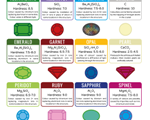
The Colour Chemistry of Gemstones – Precious Stones [Infographic]
A gemstone or gem (also called as precious stone or semi-precious stone, a fine gem, or jewel) is a piece of mineral, which, in cut and polish form, is used to make jewelry or other adornments. The colours of Gemstones – Precious Stones are affected by differences in chemical and atomic structure, leading to the absorption […]
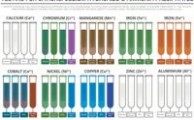
Testing for Cations By Sodium Hydroxide & Ammonia Precipitates [Infographic]
Sodium Hydroxide (NaOH) solution or aqueous Ammonia solution can be added to the solutions containing metal ions in order to discern their identity. The colour precipitate from by the reaction can be used to determine the metal identity. In some cases, the precipitate dissolves in excess NaOH and Ammonia. In the following Test for Cations […]
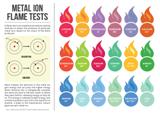
Metal Ion Flame Test Colours [Infographic]
A flame test is an analytical procedure used by chemists to detect the presence of particular metal ions, based on the colour of the flame produce. When heated, the electrons in the metal ion gain energy and can jump into higher levels. Because this is energetically unstable, the electrons tend to fall back down to […]
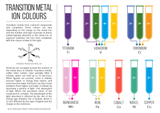
Colours of Transition Metal Ions in Aqueous Solution [Infographic]
Transition Metals form coloured compounds and complexes. These colours can be vary depending on the charge on metal ion, and the number and type of groups of atoms (called ligands) attached to the metal ion. In aqueous solutions, the ions form colours with complexes. Electrons are arranged around the nucleus of the metal atom in orbitals, […]
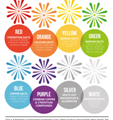
The Chemistry of Fireworks [Infographic]
Colour in fireworks is produced by pyrotechnic ‘stars’, which produce coloured light when ignited. The stars contain five basic ingredients. Metal salts are used to produced colour; a fuel is needed to allow the star to burn; an oxidising chemical provides oxygen for the combustion the fuel; a chlorine-donating compound helps strengthen some colours; and a binding chemical holds […]
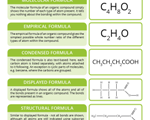
Types of Organic Chemistry Formulae [Infographic]
A guide to the different ways Organic Compounds can be represented in chemistry. Types of Organic Chemistry Formulae discussed in this infographic are: Molecular Formula The molecular formula of an organic compound simply shows the number of each type of atom present. It tells you nothing about the bonding within the compound. Empirical Formula The […]
![Simple Heterocycles in Organic Chemistry [Infographic]](https://chemistry.com.pk/wp-content/uploads/2014/08/Organic-Chemistry-Heterocycles.png)
Simple Heterocycles in Organic Chemistry [Infographic]
A Heterocycle in organic chemistry is a ring of connected atoms, where one or more atoms in ring are elements different from carbon. Heterocycles with Oxygen, Nitrogen and Sulfur are the most prevalent; Selenium, Boron, Arsenic and Phosphorus can also be incorporated. In below infographic heterocycles includes: Ethylene Oxide, Tetrahydrofuran, Furan, Tetrahydropyran, 4H-Pyran, 1,4-Dioxane, Ethylene […]